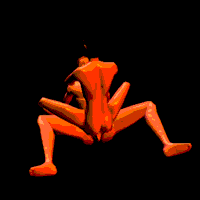![]()
|
|
About Kama Sutra | |
 |
The Kama
Sutra of Vatsyayana ("Kama Sutra" is
Sanskrit for "Aphorisms of Love") is an extraordinary and fascinating work that deserves careful reading
and study. Written in ancient India, it is essentially a technical guide, a scholarly treatise if you will, to
sexual enjoyment and other sensual pleasures. It also contains profound historical and anthropological insights
into the mores and customs of ancient India. The modern reader will often be surprised by how markedly different
the cultural paradigms presented in the Kama Sutra are from those of today. Almost nothing is known about the writer, Vatsyayana, or the exact date he wrote this work. Regarding the date, Sir Richard F. Burton (whose 1883 translation is used partially in this site—more on this below) determined from internal evidence that the Kama Sutra was written sometime between the first and sixth centuries A.D. Many scholars now believe the Kama Sutra was written during, or shortly before, the Gupta period (320-540 A.D.), which has also been called the Classical Age of India. Regarding the writer Vatsyayana, Burton makes the following insightful remarks: "...He [Vatsyayana] states that he wrote the work while leading the life of a religious student (probably at Benares) and while wholly engaged in the contemplation of the Deity. He must have arrived at a certain age at that time, for throughout he gives us the benefit of his experience, and of his opinions, and these bear the stamp of age rather than of youth; indeed the work could hardly have been written by a young man." One comment should be made about the so-called "Kama Sutra" now available at various sites on the Internet. That text document, the so-called "sexual positions list" is only a very small snippet of the entire work (a portion of one chapter out of a total of 35 chapters plus a Salutation.) It is also not from the Burton translation. Although legal considerations compel us to state that this site is For Adults Only (because Vatsyayana deals with the subject matter of human sexuality in a frank and forthright manner), it is a shame that this restriction must be applied since this site is clearly non-prurient in nature. The whole scholarly (and some would say, practical) character of the Kama Sutra is nothing like most works of erotica written today—some would even assert that the Kama Sutra is wholly appropriate even for older teens to read because of its historical and anthropological insights into our own culture and to human sexuality in general. Of course, our society is a lot different from ancient Indian society. Thus, many of the subjects and cultural practices Vatsyayana discusses are very alien, and even bizarre, to our frame of reference. But that is what makes the Kama Sutra so fascinating—something written almost two millennia ago, in a culture far removed us, tells us today that there is more than one way for a society to regulate human sexual practice and conduct. The obvious implication for us today is that we need to be very careful when we promote certain societal paradigms regarding human sexuality as somehow being fixed, absolute and timeless. They clearly are not. We are certain that you will enjoy the Kama Sutra Animated. |
Contents Main Page Lying down positions: Preludes Indrani Churning Mixture Yawning Cobra Conch Pestle Sitting positions: Black bee Mare Swing Bamboo Knot Spare Tigress Sharpening Rear-entry positions: Inversion Elephant Dog Standing positions: Knee elbow Stag Tripod Oral pleasures: Lovemaking of the crow Exotic positions: Apadravyas Unified lovers |